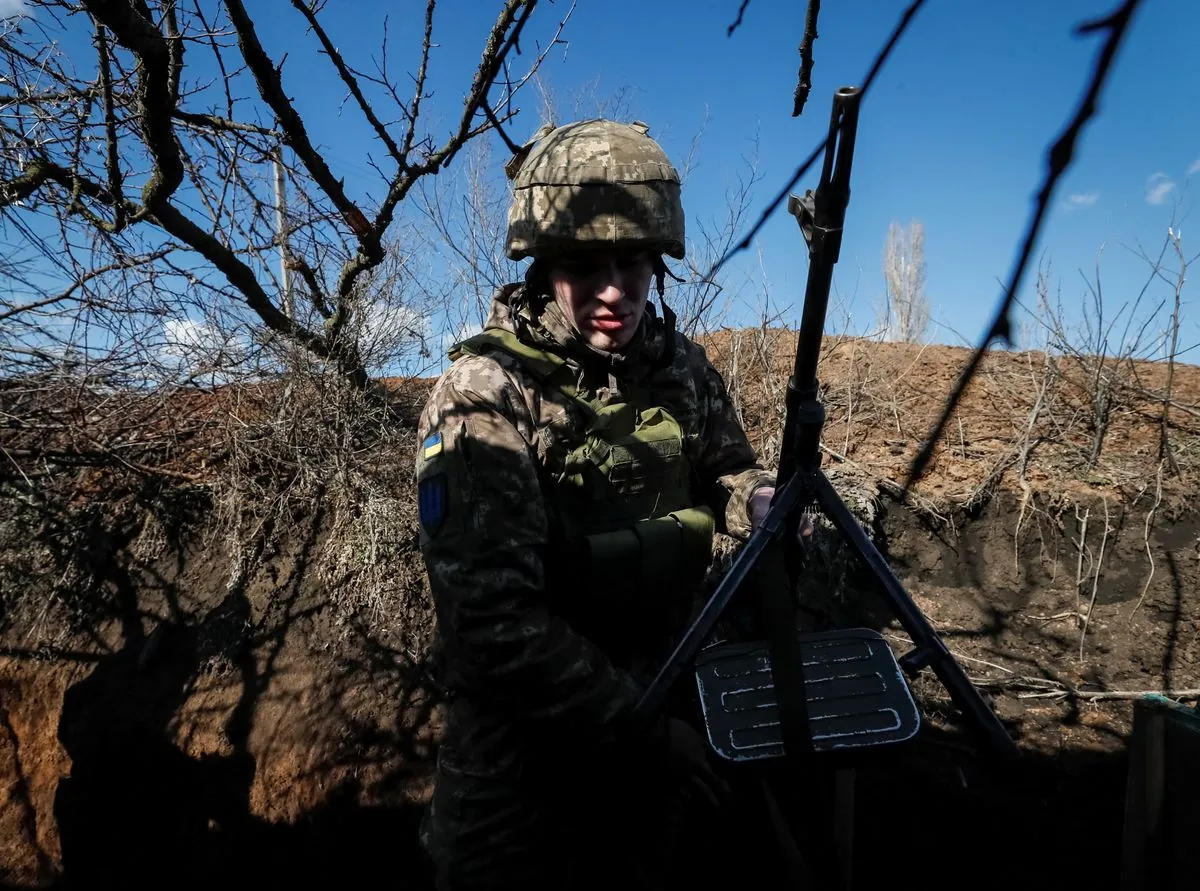Ukrainian Forces Face Improved Russian Tactics in Donetsk Struggle
Ukrainian troops confront enhanced Russian strategies in Donetsk, leading to territorial losses. Small team assaults, superior artillery, and drone support challenge Ukraine's defenses, while manpower issues persist.

In the ongoing conflict in eastern Ukraine, Ukrainian forces are grappling with increasingly sophisticated Russian tactics in the Donetsk region. The situation has led to significant territorial losses for Ukraine, highlighting the evolving nature of the conflict that began with Russia's full-scale invasion on February 24, 2022.
Andrii Bilozir, a senior sergeant in the 33rd Mechanized Brigade, described a recent engagement where Ukrainian troops were forced to retreat despite initial success. The Russian forces employed small teams, supported by superior artillery and drone capabilities, to overwhelm the Ukrainian positions. This approach marks a departure from the previous "meat assaults" tactics, where large groups of poorly trained soldiers were sent in waves.
The new Russian strategy involves well-equipped teams of 4-20 soldiers, making it challenging for Ukrainian forces to detect and target them effectively. This tactic, ironically, mirrors the approach used by Ukrainian troops in the fall of 2023 to reclaim villages from Russian control. However, Russia's numerical advantage and willingness to accept high casualties have turned this strategy against the defenders.

Ukrainian soldiers, like those from the 68th Jaeger Brigade, are adapting to these new challenges. They recently trained with U.S.-made .50-caliber and M240 machine guns, weapons designed for use against personnel and lightly armored vehicles. Despite inflicting heavy losses on the attacking forces, Ukrainian troops often find themselves compelled to fall back due to the relentless pressure.
The territorial losses have been substantial, with Russian forces gaining 318 square miles across Ukraine between August and September 2024, according to Pasi Paroinen of the Black Bird Group. The most significant advances occurred in the southern Donetsk region, coinciding with a Ukrainian incursion into Russia's Kursk region.
This Ukrainian operation, involving 30,000 soldiers, was partly intended to divert Russian troops from the eastern front. However, it may have inadvertently contributed to the losses in Donetsk by stretching Ukrainian resources thin. The situation has been exacerbated by the loss of experienced Ukrainian soldiers and the deployment of newly mobilized troops with limited training.
The fall of Vuhledar, a small city that had been staunchly defended by the 72nd Mechanized Brigade for about two years, exemplifies the dire situation. The town, with a pre-war population of around 14,000, succumbed to Russian control by October 2, 2024, following relentless artillery barrages and aerial bombardments.
"Yes."
The officer's grim affirmation came in response to whether it was a question of when, not if, Vuhledar would fall.
The conflict's impact extends beyond the frontlines. Civilians in towns like Myrnohrad are fleeing as Russian forces advance. In a poignant scene, workers salvaged medical equipment from a bombed-out hospital, including an MRI machine, as soldiers scavenged for basic medical supplies.
As the struggle continues, both sides face the challenge of sustaining their efforts in the face of heavy losses. Rob Lee, a senior fellow at the Foreign Policy Research Institute, suggests that the ultimate victor may be determined by which side can endure the longest. The strategic question remains: at what point does the conflict become unsustainable for either side?
The ongoing battle in the Donetsk region, a major industrial center since the late 19th century, underscores the evolving nature of modern warfare. From the use of drones and advanced artillery to the implementation of small unit tactics, the conflict serves as a stark reminder of the human cost of war and the constant adaptation required in the face of changing strategies.


































